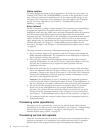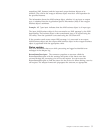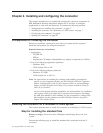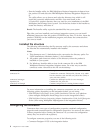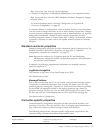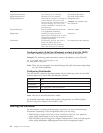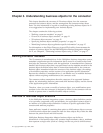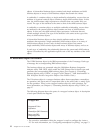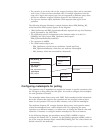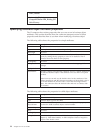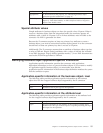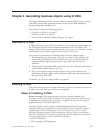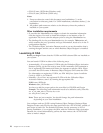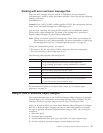
objects. A hierarchical business object contains both simple attributes and child
business objects or arrays of child business objects that contain the values.
A cardinality 1 container object, or single-cardinality relationship, occurs when an
attribute in a parent business object contains a single child business object. In this
case, the child business object represents a collection that can contain only one
record. The type of the attribute is the same as that of the child business object.
A cardinality n container object, or multiple-cardinality relationship, occurs when
an attribute in the parent business object contains an array of child business
objects. In this case, the child business object represents a collection that can
contain multiple records. The type of the attribute is the same as the type of the
array of child business objects.
A hierarchical business object can have simple attributes and can also have
attributes that represent a single-cardinality child business object or an array of
child business objects. In turn, each of these business objects can contain
single-cardinality child business objects and arrays of business objects, and so on.
In each type of cardinality, the relationship between the parent and child business
objects is described by the application-specific text of the key attribute of the child
object.
i2 business object structure
The i2 IBM business object is the IBM representation of the i2 message. Each type
of message has a corresponding IBM business object.
The business objects are generated using the WebSphere Business Integration
Adapter utility XML ODA, which reads the XML schema files for these types and
generates the corresponding IBM business object. (See Chapter 4, “Generating
business objects using i2 ODA”, on page 17 and Chapter 3, ″XML data handler″ in
IBM WebSphere Business Integration Adapters Data Handler Guide.)
The i2 business object is a wrapper business object that encapsulates a metaobject,
an operation, and input and/or output data (one or the other, both, or none) types
for the operation. There is one wrapper business object for each operation. For
more information, see Chapter 4, “Generating business objects using i2 ODA”, on
page 17.
The following diagram shows the parts of a wrapper business object. A description
of each part follows the diagram.
Supported Verb=
Wrapper BO
Operation
Metaobject (MO Instance)
Output type BO
Input type BO
v The metaobject embedded within the wrapper is used to configure the instance
ID. For more information, see “Configuring metaobjects for polling” on page 13.
12 Adapter for i2 User Guide



